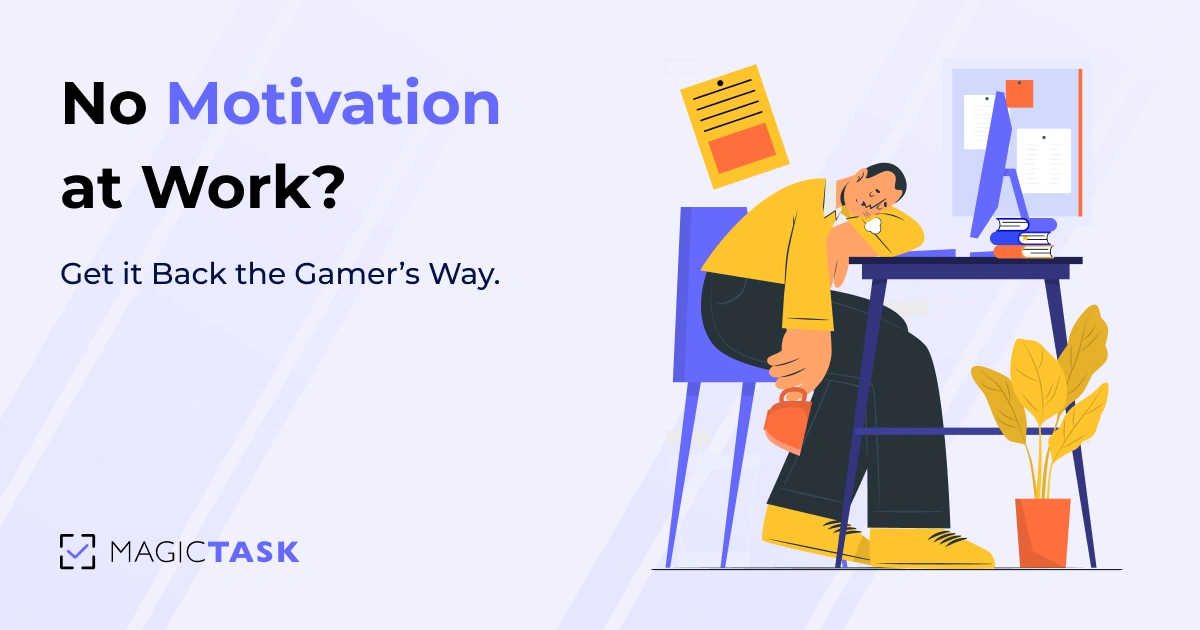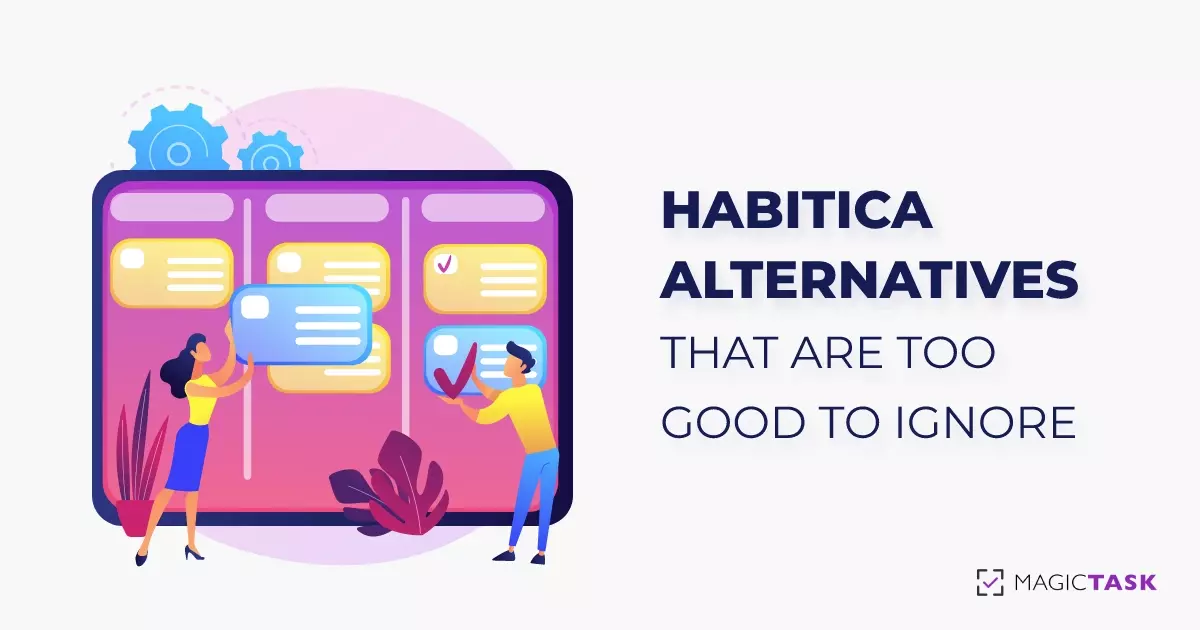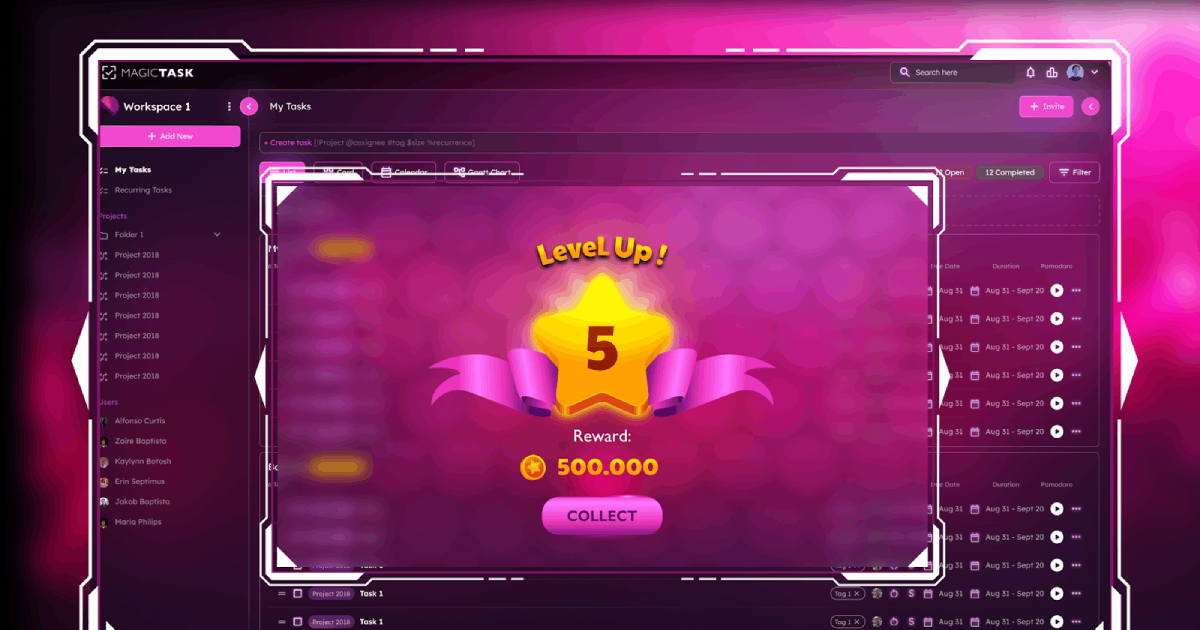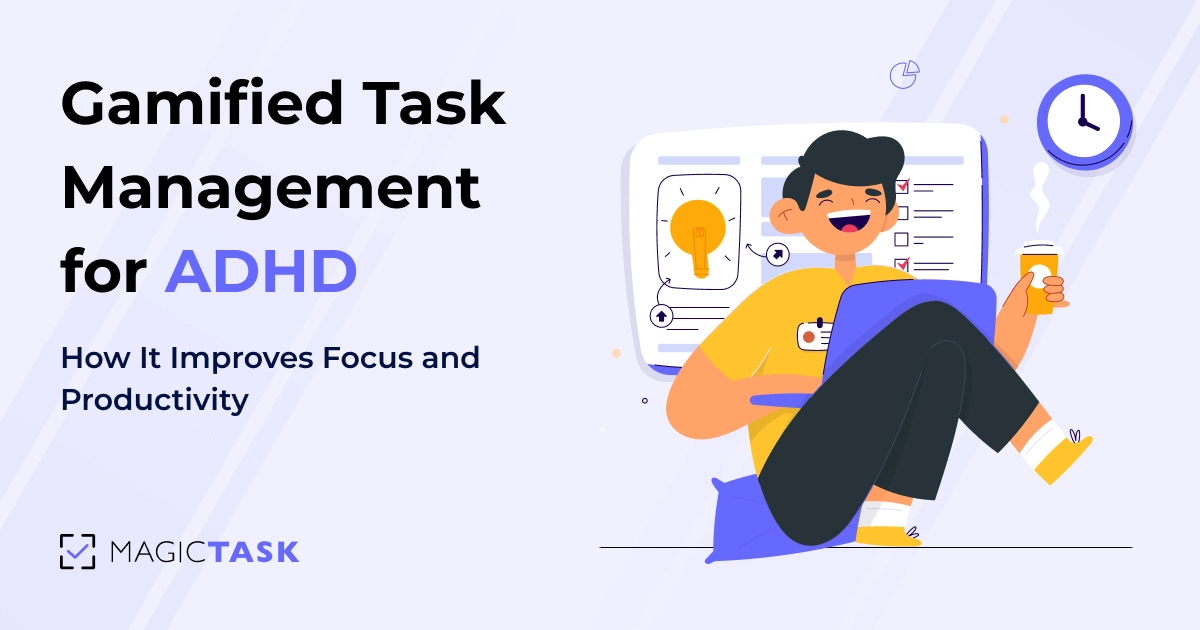Gamification: The Way to Achieve Big Goals and Success
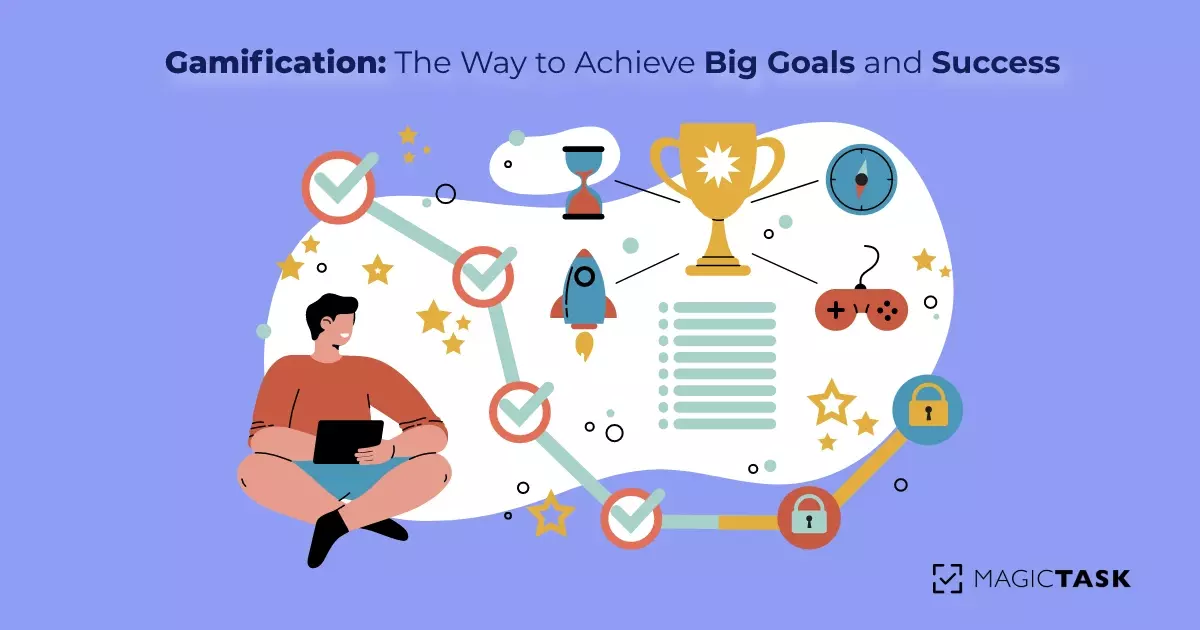
Most people think of gaming as a waste of time. They couldn't be more wrong. Gamification, the process of applying game mechanics to non-game contexts, is one of the most powerful tools you can use to engage and motivate your team.
In this blog post, we will define this process in more detail, its benefits, and how you can use it to your advantage.
Furthermore, we will also introduce a task management program that uses gamification to its full advantage.
What is Gamification?
In simple terms, it represents using game design elements in non-game contexts. It can engage users and motivate them to achieve their goals. It often employs points, badges, leaderboards, and other game mechanics to encourage users to take desired actions.
The wonderful thing about it is that it can be used in various settings, including business, education, and health care.
When applied in a business context, it can increase employee productivity, encourage customers to make purchases, or motivate employees to meet sales goals. In an educational setting, it can be used to improve student engagement and motivation. In healthcare, you can use it to promote healthy behaviors or increase patient compliance with treatments.
Its success is well documented. Around 90% of employees state that gamification makes them more productive.
How Does Gamification Work – Elements and Practical Usage
The best way to explain how this system works is through examples. While we will be using an imagined fitness app for this purpose, note that the same principles apply to a task management app for your work, an app that helps you organize your day and your week, etc.
Gamification can take many forms, but the basic idea is to use elements and mechanics common in video games to engage users and motivate them to achieve their goals. For example, a fitness app might use this system to encourage users to keep using the app by awarding them points for every workout they complete.
Note that it can be used in any app or website, and there are many different ways to implement it. As we've already mentioned, some common elements include points, badges, leaderboards, and rewards. Let's see how they apply to our fitness app example.
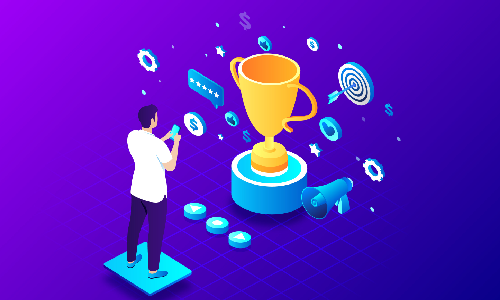
Points
Points are a common element here, and they can be used to encourage users to keep using your app or website.
For example, a fitness app might award points for every workout users complete. Users can then use these points to unlock rewards, such as discounts on future workouts, or maybe change the theme or look of their app. They might even open some paid features for free.
Badges
Badges are pretty standard, too, and can be used to show users their progress. Our gamified fitness app might give users a badge for every ten workouts they do. These badges can be displayed on the user's profile, and they can be used to motivate users to keep using the app or website. It is, essentially, a badge of honor – a reminder of their discipline and hard work.
An example of making these badges extra effective is adding “flavor,” creating an exciting design, and making them humorous or relaxed.
Leaderboards
Then, there are leaderboards. Leaderboards are another element of gamification that can be used to engage users. These are an excellent way for competitive users to see how they rank compared to other users.
For example, a fitness app might have a leaderboard that ranks users based on the number of workouts they have done or by duration or intensity. This can be used to motivate users to keep using the app or website so that they can move up the leaderboard.
Rewards
Rewards can be used to engage and motivate users. Prizes can be given for completing specific tasks or reaching certain goals. Let's say our fitness app gives people discounts if they do ten workouts in a month. Or maybe people high on the leaderboard get an extra month’s subscription-free (if that's the model you are going for).
Another reward can be extra content within the app. So, after several days of continuous use, you might get a new template or theme for your app. Perhaps a new feature unlocks after a while.
These can be somewhat complicated since you need to figure out how much content should stay locked initially. Furthermore, discounts and coupon rewards works as incentive to increase loyalty.
When used effectively, this system can be a powerful tool for motivating people to achieve their goals. However, it is vital to use it in a way that is appropriate for the context and audience. This system should not be used simply to add game elements to a situation; it should be used thoughtfully and strategically to ensure that it is an effective motivator.
Gamification and Motivation – Why It Works
This system can engage users and motivate them to achieve their goals. It can have several benefits, all centering around increased productivity, motivation, and engagement.
It can improve engagement by making activities more enjoyable and rewarding.
Different businesses have different methods of gamifying their processes, but generally speaking, the idea is to make work more like a game. This can be done in several ways, such as adding points, levels, and leaderboards to tasks or offering rewards for completing particular objectives. The goal is to make employees more engaged with their work and to make them more likely to stick with the company in the long run.
There are a few reasons it works so well as a means of engagement and motivation. First, games are fun and engaging by nature. They provide a sense of challenge and reward that can motivate people. Second, games often have built-in social elements that encourage competition and collaboration, which can be powerful motivators. Finally, games can be very addictive, and this addiction can keep people coming back for more.
Gamification works because it taps into our natural desires to compete, cooperate, and be engaged. When these desires are harnessed correctly, they can lead to some fantastic results.
One of the most famous examples of gamification is the case of Foursquare. This social media platform encourages users to “check in” at different locations using their smartphones. The more check-ins a user has, the more points they earn and the higher their ranking on the leaderboard.
This simple act has led to some incredible results for Foursquare. In just a few years, the platform has amassed millions of users and become one of the world's most popular social media platforms.
How to Gamify Your Life with MagicTask?
Now let's talk a bit more about MagicTask.
MagicTask is a gamified project and task management platform that gives a beautiful combination of order and fun, helping you maximize your work and daily routine. Here is how it works.
Practical Stuff and Design
On a purely practical level, it practices “hyper-simplicity.” The entire interface is exquisite and simple. It's super easy to navigate, with an intuitive design,
Adding tasks, projects, and subtasks is a piece of cake, giving lots of control to every team member.
One of the co-founders stated that the app is light enough to make a simple shopping list he shares with his wife and powerful enough to run a multi-year project.
The interface is transparent, allowing a project manager to see who is doing what. First-floor employees know precisely how their simple tasks are connected to something far more significant.
Gamifying Your Work And Life
Regarding the fun, gamer part, we should talk about the “Theme Marketplace.” This feature offers unique themes that will make completing daily tasks much more fun. It's just a little extra variety that helps people stay motivated when working.
This motivation comes from the point system, where the more you use the system, the more points you get, which you then use to unlock new levels within the app. So with new levels you can expect things like cool animations and sound effects.
Since it has been built by gamers, for gamers, of course, it has an equipment rarity system. Each theme on offer has its rarity level, such as standard, rare, legendary, and grandmaster.
Essentially, you stick to your work and your tasks thanks to the rewards, the points, and the extra general sense of achievement you get
Of course, both of these elements are important. Them working together is what makes this tool stand out.
Conclusion
If you have read our blog post, you probably know how gamification works and how it's applied. However, if you genuinely want to see it work in practice, we suggest you check out MagicTask, a gamified task management tool to help you achieve your goals and work.
